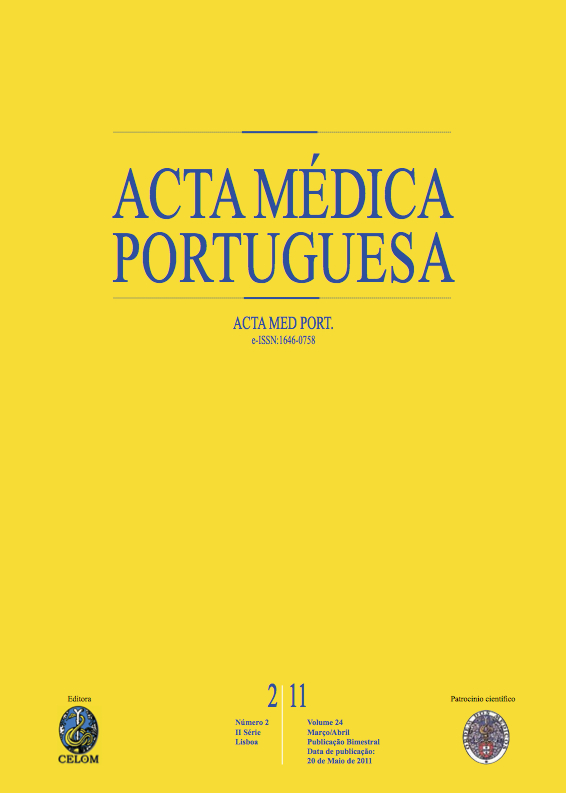Anogenital warts in children: the importance of a multidisciplinary approach.
DOI:
https://doi.org/10.20344/amp.1608Abstract
Anogenital warts are caused by human papillomavirus (HPV) infection. Its presence in children raises concern of a possible sexual abuse. A multidisciplinary team approach is essential to clarify the mode of infection's transmission.Female child, three years of age referred to pediatrician for perianal warts. A history of similar lesions in another location in the child, parents or cohabiting was denied and possible sexual abuse refused. Gynecologic assessment of mother and daughter lead to identification of HPV type 6 at the child's lesions and negative studies results in the mother. Evaluation of the child in psychology showed no signs of possible abuse and social assessment concluded there was no context of risk. After two cycles of topical treatment with imiquimod 5%, complete regression of lesions was achieved, with no recurrence to date.No evidence of sexual abuse emerged from the set of clinical evaluations performed. The strategy of an extended follow-up is mandatory, and comes from the required prudence in this context, in order to ensure timely identification of risk situations which might have been previously unnoticed.Authors emphasize the dichotomy between a simple clinical diagnosis and the complex multidisciplinary approach which is crucial to elucidate a situation with potential socio-medico-legal implications.Downloads
Downloads
How to Cite
Issue
Section
License
All the articles published in the AMP are open access and comply with the requirements of funding agencies or academic institutions. The AMP is governed by the terms of the Creative Commons ‘Attribution – Non-Commercial Use - (CC-BY-NC)’ license, regarding the use by third parties.
It is the author’s responsibility to obtain approval for the reproduction of figures, tables, etc. from other publications.
Upon acceptance of an article for publication, the authors will be asked to complete the ICMJE “Copyright Liability and Copyright Sharing Statement “(http://www.actamedicaportuguesa.com/info/AMP-NormasPublicacao.pdf) and the “Declaration of Potential Conflicts of Interest” (http:// www.icmje.org/conflicts-of-interest). An e-mail will be sent to the corresponding author to acknowledge receipt of the manuscript.
After publication, the authors are authorised to make their articles available in repositories of their institutions of origin, as long as they always mention where they were published and according to the Creative Commons license.









